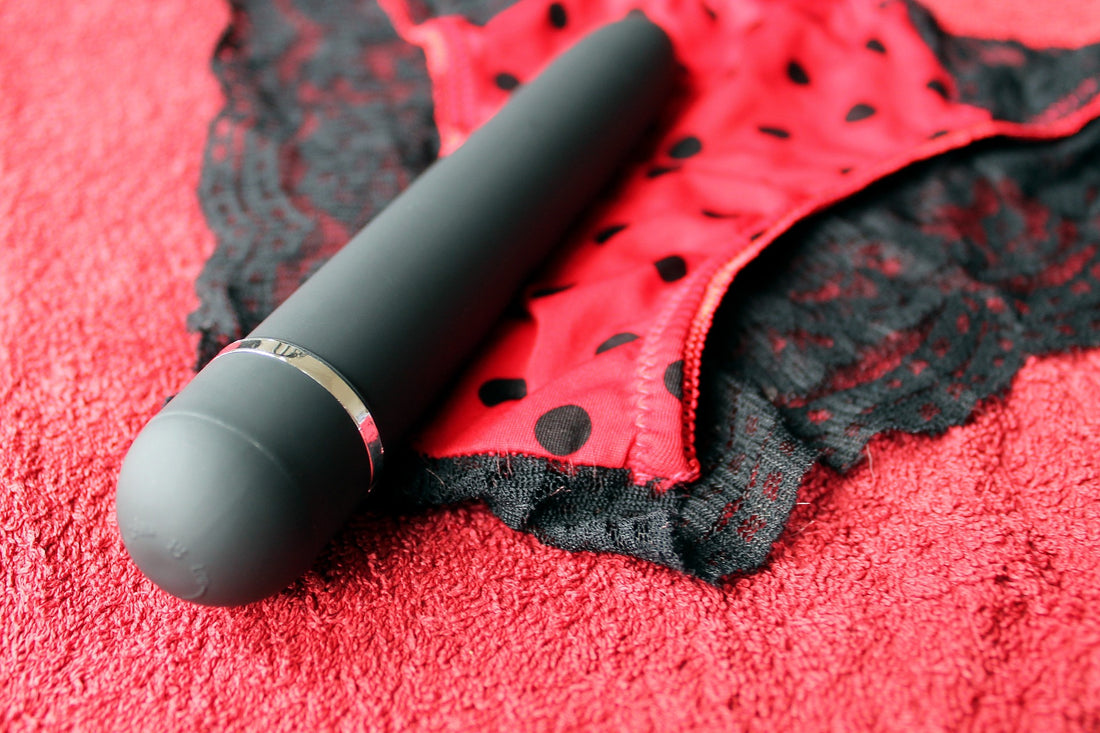
Sex Toy Materials: A Guide to Making an Informed Choice
When it comes to choosing a sex toy, the material it is made of plays a vital role in ensuring safety, comfort and pleasure.
This choice may seem daunting to novices or those who have never thought about this detail, but knowing the most common materials will allow you to make an informed purchase.
This blog post aims to demystify the main materials used in sex toy manufacturing, explain their pros and cons, and address common concerns about their safety.
This choice may seem daunting to novices or those who have never thought about this detail, but knowing the most common materials will allow you to make an informed purchase.
This blog post aims to demystify the main materials used in sex toy manufacturing, explain their pros and cons, and address common concerns about their safety.
Why is Material so Important?
The material influences several aspects of a sex toy
-
Feel : Some materials are softer, firmer, or more flexible than others.
-
Safety : Not all materials are equal in terms of hygiene and biocompatibility.
-
Maintenance : Some sex toys are easier to clean and maintain than others.
-
Durability : Some materials are designed to last, while others degrade more quickly.
To help you understand better, let's look at the most common materials.
1. Silicone: The King of Materials
Features
Silicone is arguably the most popular material for high-end sex toys.
It's soft to the touch, flexible yet firm enough to provide good support, and, most importantly, non-porous, meaning it won't absorb bacteria.
It's soft to the touch, flexible yet firm enough to provide good support, and, most importantly, non-porous, meaning it won't absorb bacteria.
Benefits
-
Hypoallergenic and Body Safe : Ideal for people with sensitive skin or allergies.
-
Non-porous : Easy to clean with soap and water, or even by boiling water sterilization.
-
Realistic feel : Its texture is often reminiscent of human skin.
-
Durable : With proper care, silicone sex toys can last for years.
Disadvantages
-
Incompatibility with certain lubricants : Silicone-based lubricants may degrade this material.
Prefer water-based lubricants.
-
Cost : Silicone products are generally more expensive, but the quality justifies it.
2. ABS Plastic: Lightweight and Affordable
Features
ABS plastic is a hard form of plastic used for simple sex toys like classic vibrators or vibrating eggs.
Although it is less luxurious than silicone, it remains a safe and durable option.
Although it is less luxurious than silicone, it remains a safe and durable option.
Benefits
-
Non-porous : Easy to clean and hygienic.
-
Firmness : Offers a different feel, perfect for those who prefer rigid toys.
-
Affordable : Ideal for beginners or those on a budget.
-
Universal compatibility with lubricants : No risk of degradation with lubricants.
Disadvantages
-
Less pleasant to the touch : The plastic can be cold and lack flexibility.
-
Simple aesthetics : It does not offer the variety of textures or sensations that other materials do.
3. Borosilicate Glass: Elegance and Hygiene
Features
Borosilicate glass, often used for luxury sex toys, is a medical grade glass known for its strength and safety.
Benefits
-
Non-porous and easy to sterilize : One of the most hygienic materials available.
-
Durability : Borosilicate glass is resistant to thermal and mechanical shock.
-
Sensory versatility : Can be heated or cooled to vary sensations.
-
Aesthetic appearance : Often made in elegant and artistic forms.
Disadvantages
-
Rigidity : This material is not suitable for those who prefer flexible toys.
-
Relative Fragility : Although it is very sturdy, extreme shock can still break it.
4. Stainless Steel: Luxury and Weight
Features
Stainless steel is another premium material used for durable and safe sex toys.
Benefits
-
Non-porous and sterilizable : Perfect for optimal hygiene.
-
Weight : Steel offers a unique pressure sensation, very appreciated for certain uses.
-
Almost unlimited lifespan : Does not degrade over time.
-
Luxurious aesthetics : The shiny metallic look is often synonymous with high quality.
Disadvantages
-
High price : It is one of the most expensive materials.
-
Cold sensation : May require preheating for comfort.
-
Weight : Some users may find this uncomfortable.
5. Jelly: An Affordable but Risky Option
Features
Jelly sex toys are often the least expensive on the market and are distinguished by their soft texture and their colorful and fun appearance.
However, this porous material can pose safety concerns.
However, this porous material can pose safety concerns.
Benefits
-
Low Prices : Affordable for tight budgets.
-
Flexibility : Ideal for those who prefer very flexible toys.
-
Wide choice of designs : Jelly is used for toys of all shapes and colors.
Disadvantages
-
Porous : Absorbs bacteria, making it difficult to clean.
-
Toxic potential : Some jelly toys contain phthalates, chemicals that are controversial for their impact on health.
-
Limited lifespan : Material can degrade quickly.
6. TPE/TPR (Thermoplastic Elastomers): Between Flexibility and Accessibility
Features
TPE and TPR are soft, economical materials used for realistic or textured sex toys.
They fall somewhere between jelly and silicone in terms of quality.
They fall somewhere between jelly and silicone in terms of quality.
Benefits
-
Softness and flexibility : Very pleasant to the touch, often used for realistic toys.
-
Reasonable price : Cheaper than silicone, but safer than jelly.
Disadvantages
-
Porous : Requires rigorous maintenance to remain hygienic.
-
Less durable : May deteriorate more quickly than silicone or steel.
-
Non-sterilizable : Does not withstand high temperatures for deep cleaning.
7. Varnished Wood: Natural and Unique
Features
Although less common, treated wood is sometimes used for homemade sex toys.
It is coated with non-toxic varnish to ensure safety.
It is coated with non-toxic varnish to ensure safety.
Benefits
-
Non-porous thanks to the varnish : Easy to clean.
-
Ecological and aesthetic : A sustainable option and often very visually attractive.
Disadvantages
-
Careful maintenance : The varnish must remain intact to ensure safety.
-
Cost : Can be relatively expensive due to the craftsmanship.
How to Choose the Right Material?
When choosing a sex toy, consider the following:
-
Your personal preferences : Do you prefer firmness or softness? A warm or cool sensation?
-
Your sensitivity level : If you have sensitive skin, opt for hypoallergenic materials like silicone, glass or stainless steel.
-
Your budget : If you're just starting out, ABS plastic or TPE can be good entry points.
-
Maintenance : Are you willing to put in the time for cleaning?
Non-porous materials like silicone, glass or steel are ideal for minimal effort.
Some Safety Tips
-
Read the labels : Make sure the sex toy is made from body-safe materials.
-
Clean after each use : Follow material-specific instructions.
-
Use the right lubricant : For example, avoid silicone-based lubricants on silicone toys.
-
Replace if necessary : If a jelly or TPE toy begins to show signs of wear, replace it immediately.
Conclusion
Choosing a sex toy involves understanding the materials and their impact on your safety and pleasure.
Investing in toys made of safe materials like silicone, glass or steel may seem expensive, but it ensures a more enjoyable and long-lasting experience.
By educating your customers about these options, you empower them to make confident choices while giving them peace of mind.
Investing in toys made of safe materials like silicone, glass or steel may seem expensive, but it ensures a more enjoyable and long-lasting experience.
By educating your customers about these options, you empower them to make confident choices while giving them peace of mind.




